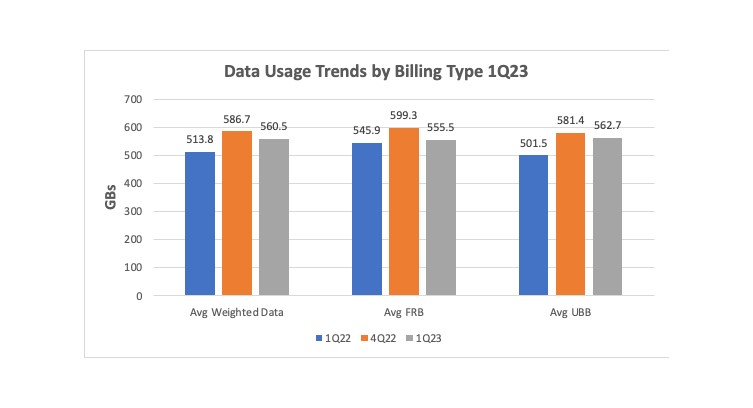OpenVault Broadband Insights on Wednesday released a 1Q23 report that reveals that subscribers on usage-based broadband (UBB) plans achieved and slightly exceeded consumption parity with their flat-rate (FRB) plan counterparts for the first time.
The report notes that significantly higher rates of usage growth among UBB subscribers resulted in average (562.7 GB) and median (382.0 GB) monthly UBB consumption that was marginally higher than the 555.5 GB average and the 371.1 GB median for consumers on FRB plans. The report leverages data aggregated from OpenVault’s suite of broadband management tools.
Past OVBI reports have detailed the connection between faster internet speeds and increased data consumption. OpenVault’s analysis shows that in 1Q23 approximately 30% more UBB subscribers (90%) enjoyed speeds of 200 Mbps or faster than did FRB subscribers (63%). During the same period average usage grew at a rate of 12.2% for UBB subscribers, nearly 7x that of FRB consumers, while median usage grew at a rate of 17.3% for UBB subscribers as FRB median usage remained flat.
Other findings in the report include:
- While overall monthly average data usage rose 9.1% year over year to 560.5 GB, from 513.8 GB in 1Q22, monthly median data rose 11.9% to 378.6 GB, from 338.4 GB a year ago. The higher median growth rate indicates a broad increase in consumption across operators’ entire subscriber bases.
- The percentage of power users consuming 1 TB or more per month in 1Q23 was 17%, a year-over-year increase of 16.2%, while super power users consuming 2 TB or more per month rose to 3% from 2.4% a year earlier, a 26.9% YoY increase.
- The percentage of subscribers on speed tiers of 500 Mbps or faster reached 40% in 1Q23, an increase of 106% over 1Q22.
Source: https://openvault.com/resources/ovbi/
(from report)
Implications for the broadband industry are mixed. On the one hand, faster speed adoption often results in higher ARPU for operators and increased satisfaction for consumers as they ‘right-size’ to subscription plans that are aligned with their actual usage. On the other hand, operators who have viewed UBB as a tool to reduce strain on the broadband plant will need to explore new solutions for maintaining and improving network health and alleviating network congestion.


















